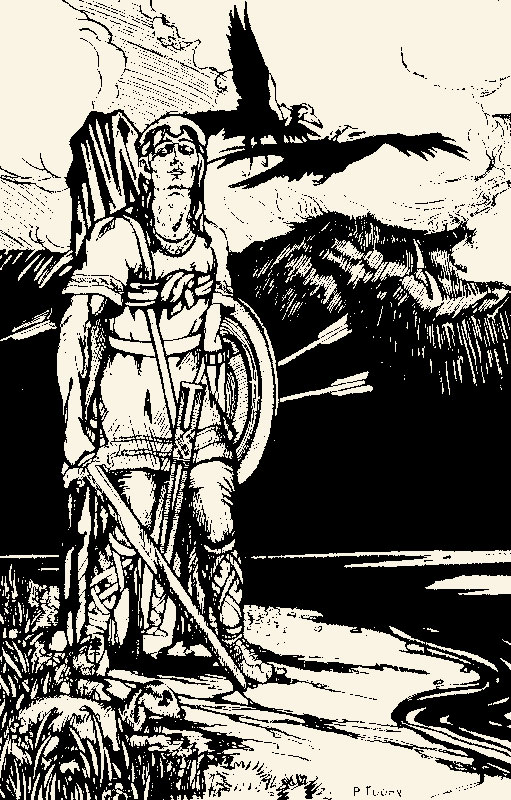
One thread that occasionally raises its head throughout Irish mythology is the motif associated with the burial process of some rí (a word often mistranslated as ‘king’ but more accurately translated as ‘chieftain’) or mythological celebrities, where the corpse is bound upright or interred in the standing position, usually in defiance of an enemy or rival population group.
The early and medieval Irish literature contains several references in this regard but the most famous is probably linked to that of Cú Chulainn who, in a final act of defiance, ties himself to a standing stone to die on his feet. Facing his enemies, he remains upright for three days after he dies as they’re too terrified to come close (clearly, nobody thought of throwing a stone!).
Another celebrity associated with upright burials was Laoghaire (son of the infamous Niall). Famous for his hostile interactions with Saint Pat, Laoighaire is recorded (by Tíreachán) as being buried on the ridges of Tara, placed upright and facing south in defiance of the Leinster tribes. This follows somewhat in his father’s footsteps, given that Neill’s body was also said to have been held aloft by his tuath as a good-luck token when heading off to battle.
Early Irish literature has a few other references to the bodies of chieftains and heroes being buried upright and although there is a possibility that might have reflected some kind of burial ritual linked to the cult of warriors, it’s very much a literary motif rather than a historical one. As a result, you really have to be careful with its interpretation.



I can always count on you impart some pithy fact about Irish mythology I was unaware of. Very interesting. I’m thinking of doing the same when I die….have someone tie me to a tree bordering a trout stream, fly rod in hand. :-))